“In the dog house.” The phrase has developed a negative connotation over the years. But your favorite canine happens to LOVE their dog house. It represents a safe space for them. They go there whenever the weather’s bad, or if they want some time to themselves. Most people think of the outdoor variety only, though. What about dogs without a yard? Shouldn’t they get the same comfy space? Of course. And that’s why you can find indoor dog houses.
Safe and Secure
Crate training is an important part of a dog’s life. You establish their kennel as the spot your pup sleeps in and stays within when you leave for work or on errands. And since dogs prefer the comfort of a “den” to feel safe, having that designated spot works well.
But what about times your dog may need a different “time out?” For instance, when you have friends over for a get-together. You don’t want to exclude your furry friend from the activity, but they may feel uncomfortable with everyone around.
That’s where an indoor dog house comes in handy. Your dog knows that’s THEIR spot in the house. They can settle in whenever they want. There’s no door, though, so it’s separate from their crate.
Uses For an Indoor Dog House
Plenty of owners keep indoor dog houses around. They’re especially popular for apartments. (You know, no backyards there.) The structures work nicely for plenty of situations:
- Offering a comfortable retreat for your dog
- Providing a designated sleeping spot (especially if you’d rather not fight with dog hair on the couch)
- Adding an extra layer of warmth in colder weather – a nice option for hairless breeds
- Giving you a place to put some of your dog’s favorite toys for play sessions
Your dog has the option to come and go as they please. This establishes the indoor dog house as a different retreat than their crate. And you’ll find they appreciate having the choice of where they want to go.
Choosing an Indoor Dog House
You’ll find plenty of options when it comes to indoor dog houses. And if you have space, there’s no reason you can’t take an outdoor model and bring it inside. It may not look as appealing (or be as comfortable to bump into). You’re only limited by your imagination – and possibly your wallet. But, whichever route you choose, you want to keep these key features in mind:
- Size: If your dog can’t comfortably get into the indoor dog house, stand in it, and turn around, they probably won’t use it. You’ll want to look at the measurements carefully.
- Materials: You can find everything from plush fabrics to wood to plastic. Some materials last longer than others. And some stub your toes easier. It’s important to consider your placement for the house and your dog’s personality. If they like to chew, you’ll want something that won’t land them in the hospital for a foreign body.
- Design: Are you hoping your pup will use the indoor dog house for napping and playing? Or do you plan to have it double as a crate? Knowing your plans will help you decide on a design.
- Assembly: Some indoor dog houses don’t require any assembly. Others? You’ll have to break out the toolbox. Neither’s better or worse, but keep in mind your skill with the hammer.
Measuring Your Dog For an Indoor Dog House
Getting those measurements right is crucial. You don’t want a squished pup. And while you don’t need to worry about your dog getting chilled inside, a too-large indoor dog house may not provide the cozy feel your furry friend is looking for. So you want to take four measurements to find the right fit. And you want your dog STANDING for all of them.
- Height. Measure from the top of your dog’s head to the floor. If your dog’s ears stand up, include them. Then multiply your measurement by 1.25. This will prevent any head bumps when walking around.
- Length. Now you want to measure from the nose tip to the hind end. You’ll do the same multiplication by 1.25. Again, you’re offering a buffer zone, so you’re dog isn’t squeezed into the indoor dog house.
- Width. Next, measure the widest part of your dog’s body. You want to add 2 inches to the number you get. (This isn’t for the entire indoor dog house – just the entryway)
- Door. Last, measure from your dog’s shoulder to the floor. This time, you only need to multiply by 0.75. Dogs WILL duck their heads to enter a dog house, so you don’t need to go quite so high there.
If you find you’re between sizes, go for the larger option. You can always add pillows or cushions to make your dog’s space feel cozier. Trying to make a tinier house feel larger? That’s harder to accomplish.
The Best Indoor Dog Houses
You always have the option of choosing any dog house and bringing it inside. However, this is a focus on indoor dog houses. In other words, styles that won’t hold up to outdoor weather conditions. They’re also on a smaller scale, making it easier to fit them around your furniture. But they still make ideal retreats for your dog when pups need to get away from the hustle and bustle in the household. And they’re cute houses. You won’t be able to resist snapping a picture of your beloved canine snuggling inside!
The Best Furniture Indoor Dog Houses
You want to offer your dog an indoor dog house, but you’re limited on space. If you could find a way for the house to do double-duty, that’d work best. And that’s where these furniture-type dog houses come in handy. Your dog still gets their hideaway, but you don’t need to find extra room. Instead, you’re getting a furniture piece out of the deal. It’s a win for everyone!
Casual Home provides a stunning wooden crate that doubles as an end table. The double doors have a lock, but you can also leave them open to give your pup access whenever they want. It comes in an espresso finish that looks sleek in any setting. And the top can support up to 200 pounds! It’s designed for dogs weighing between 40-90 pounds, but with plenty of pillows, a smaller dog will consider it the perfect retreat.
Downsides? It’s an expensive indoor dog house. It DOES work as a piece of furniture, but you’ll need to decide if you want to splurge. You’ll also want to skip it if your dog’s a chewer as the wood may be too tempting. (Especially if you spent that much)
The Good
- Wood
- Doubles as end table
- Double doors with lock
The Bad
- Expensive
- Too large for small dogs
- Not designed for chewers
For comfort you and your dog can share, Furhaven has the perfect answer. Their indoor dog house doubles as a footstool or ottoman, depending on the size you choose. The outside polyester comes in five color choices, and the interior is lined with comfy sherpa fleece. Both are easy to remove and completely washable, so you won’t have to worry about hair building up. And the top can support up to 130 pounds of weight, allowing you to easily prop up your feet while your dog snuggles beneath.
The downsides? Even the ottoman size is too small for larger dogs. And the material still won’t hold up to chewers. You also need to take it easy on the zippers, as some people found them coming apart with frequent use.
The Good
- Polyester and sherpa fleece
- Doubles as a footstool or ottomoan
- Available in 2 sizes
- Available in 5 colors
- Machine washable
The Bad
- Too small for large dogs
- Not designed for chewers
- Zippers not durable
The Best Portable Indoor Dog Houses
Okay, so these indoor dog houses? They’re out-of-the-box ideas. However, they can work nicely for your pup. And since they’re portable, they mean you can fold them up and take them with you wherever you go. This gives your dog their personal retreat whether they’re on vacation, at a friend’s house, or seeing family for the holidays. (Sometimes, looking at things from a new angle can provide great results!)
Petsfits provides a pet crate you can easily carry around if you want to move your indoor dog house from place to place. There’s a steel frame with three mesh “windows” you can roll out of the way to offer your pup privacy or a clearer view – depending on how they feel. They include a sherpa pad for the bottom that’s easy to toss into the wash whenever you need. The outside is waterproof, just in case someone spills a water bowl near it. And you have three sizes and two colors (grey and black) to choose from.
Downsides? The mesh isn’t strong enough to hold up to digging habits. And the zippers aren’t the most durable, tending to break. You may want to leave them in one position and ignore them.
The Good
- Mesh and sherpa fleece
- Waterproof exterior
- Pad is machine washable
- Available in 3 sizes
- Available in 2 colors
The Bad
- Zippers not durable
- Not deisgned for diggers
- Not designed for chewers
If you want to offer your dog the most space of any indoor dog house, you want Ruff ‘n Ruffus. The waterproof nylon panels all feature reinforced stitching for extra durability. And the corners? They’re kept under protected seams where your dog can’t fuss with them. The house folds and unfolds without ease, and you have a detachable roof and door that zips on and off. That lets you (or your pup) decide when you want to use them. They give you a free carrying tote, and everything only weighs 16 pounds. Plus, they throw in a collapsible bowl as a gift. But, best of all, you’re getting a 100% satisfaction guarantee.
The downsides? The nylon’s sturdy, but the upper mesh isn’t as resistant. And if you have a dog playing in the house, they may tip it over. You may want to find a way to weigh it in place.
The Good
- Nylon and mesh
- Waterproof
- Available in 3 sizes
- Includes carrying tote
- Includes collapsible bowl
- 100% satisfaction guarantee
The Bad
- May tip over with play
- Not deisgned for diggers
- Not designed for chewers
The Best Soft Indoor Dog Houses
Comfort and a place to rest are some of the top reasons people bring home indoor dog houses. So why not look for soft options that mimic dog beds? Your pup will still have somewhere to call their own, with all of the cushiony comforts they could ask for. Of course, these indoor dog houses AREN’T good choices for dogs that chew. The plushy fabrics may end up shredded in no time.
Does it get any cuter than Best Pet Supplies? Their indoor dog house even proclaims “Home Sweet Home” in embroidery across the entrance. The fleece is stuffed with polyfill to provide top comfort for your dog. You can remove the pillow, and the roof zips off, making it easier to toss everything into the washing machine. And you get three color patterns to choose from.
Downsides? This dog house only comes in one size, and it’s designed to fit small dogs. And you may want to keep it for those pups looking for a sleeping spot as it’s not the most sturdy option out there. (Rough and tumble play will send it crumbling) Some people struggled with the zipper, too. It DOES fold flat, but that won’t help much when you need to wash it.
The Good
- Fleece and polyfill
- Available in 3 colors
- Machine washable
The Bad
- Only available in 1 size
- Too small for large dogs
- Zippers not durable
- Not designed for chewers
Little Dove offers a different indoor dog house. You get an adorable teepee for your pup to call their own. And it includes a chalkboard so you can write their name or something equally cute and hang it over the entrance! The sturdy cotton canvas and pine poles are easy to assemble (and you won’t need tools). You also get rubber caps for the bottom to prevent the teepee from sliding all over hardwood floors. And it’s washable, too!
The downsides? You’ll need to provide your own cushion – it isn’t always sold with the teepee. (They DO have some that come with it, but that costs extra) And while there are two sizes available, your bigger dogs are going to miss out.
The Good
- Cotton and pine
- Available in 2 sizes
- Machine washable
The Bad
- Cushion not always included
- Too small for large dogs
- Not designed for chewers
When it comes to staying warm, Petmaker offers the perfect indoor dog house. The entire interior is lined with sherpa fleece, which promises to keep your dog toasty warm as they settle inside. The outside is a water-resistant polyester, which carries through to the bottom pad, too (in case of accidents). It comes vacuum-packed for convenient shipping, but it takes no time to shape into the cottage. You have two colors to choose from, both with a removable floor.
So what are the downsides? Unhappily, you only get one size, and it’s meant to suit dogs weighing under 35 pounds. And while you can spot-clean the fabrics, they’re not designed to hold up in the washing machine. It’s also another soft indoor dog house that doesn’t offer much in the way of support. So it’s better if you keep it for sleep instead of play.
The Good
- Polyester and sherpa fleece
- Water-resistant exterior and bottom
- Available in 2 colors
The Bad
- Only available in 1 size
- Too small for large dogs
- Spot-clean only
- Not designed for chewers
The Best Standard Indoor Dog Houses
Of course, plenty of people enjoy the look of a standard dog house. They just want to use them inside. And that’s where these indoor dog houses come in. They lack the weatherproofing to handle snow, sleet, or rain, but they’ll hold up to heating vents and air conditioning without a problem. And they’ll withstand whatever activity your dog wants to use them for. You won’t even mind setting aside the extra space you’ll need to keep them because your dog will look adorable snuggled inside.
How cute will your dog look, relaxing on the balcony of the Merry Pet indoor dog house? It’s the perfect combination of relaxation and a space to withdraw. The two levels are connected by a ladder that runs along the side, giving your pup a choice of where they want to sprawl. And the cedar construction will smell pleasant while keeping away any unwanted pests that might find their way indoors. When you need to clean it, the roof and bottom slide off to make it an easy chore.
Downsides? Genuine wood products aren’t the most friendly on the wallet, unhappily. And this indoor dog house won’t fit larger dogs, either. Assembly can get a little tricky. The instructions aren’t difficult to follow, but some pieces are longer than people anticipated, requiring some time (and patience) to get everything into place. The ladder may not function well for dogs with arthritis or balance issues, as it’s on the steep side. And a few people found the house wobbly. You may want to consider adding some extra reinforcement.
The Good
- Cedar
- Two levels with balcony
- Easy to clean
The Bad
- Expensive
- Only available in 1 size
- Too small for large dogs
- Ladder steep for some dogs
- Difficult to assemble
- Not designed for chewers
What about the bigger dogs out there? That’s where Petmate comes in. Their indoor dog house works for sizes all the way up to 125 pounds (which will even cover some giant breeds). The heavy-duty plastic comes with a Microban coating that resists bacteria, mold, mildew, and stains, keeping it looking clean and fresh. It’s also easy to assemble! The inside features a raised floor with vents at the top to allow for proper ventilation.
The downsides? It’s probably not the most attractive indoor dog house out there. Whether that’s a deal-breaker or not is up to you. And the three sizes EXCLUDE the little guys, as they’re not meant for pups weighing less than 25 pounds. Owners also found the doorways on the short side, causing dogs to duck more than expected. Check those measurements carefully.
The Good
- Plastic
- Microban coating
- Easy to clean
- Available in 3 sizes
The Bad
- Too large for small dogs
- Doorways may be too short
- Not designed for chewers
In the Dog House
Every dog needs to have somewhere comfortable they can call their own. And if you pick up an indoor dog house, they can relax in a cozy spot that’s different from their crate. They’ll know to head there whenever things get too loud or busy. And YOU’LL have the peace of mind, knowing your canine companion has a retreat where they feel safe.
And, who knows? Maybe we’ll get people to change the meaning of “in the dog house.” We can adjust it to something positive, where you feel comfortable and happy!

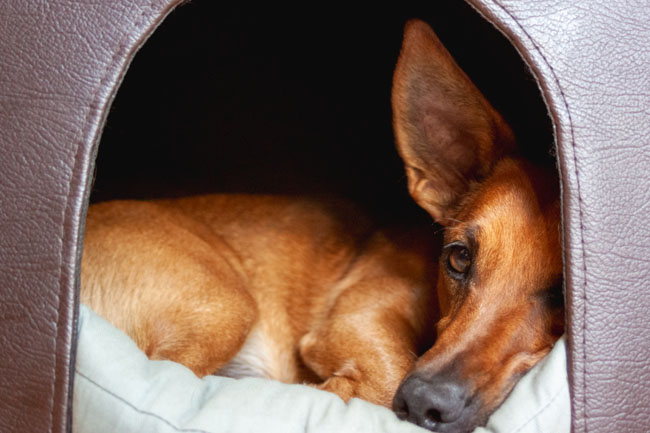
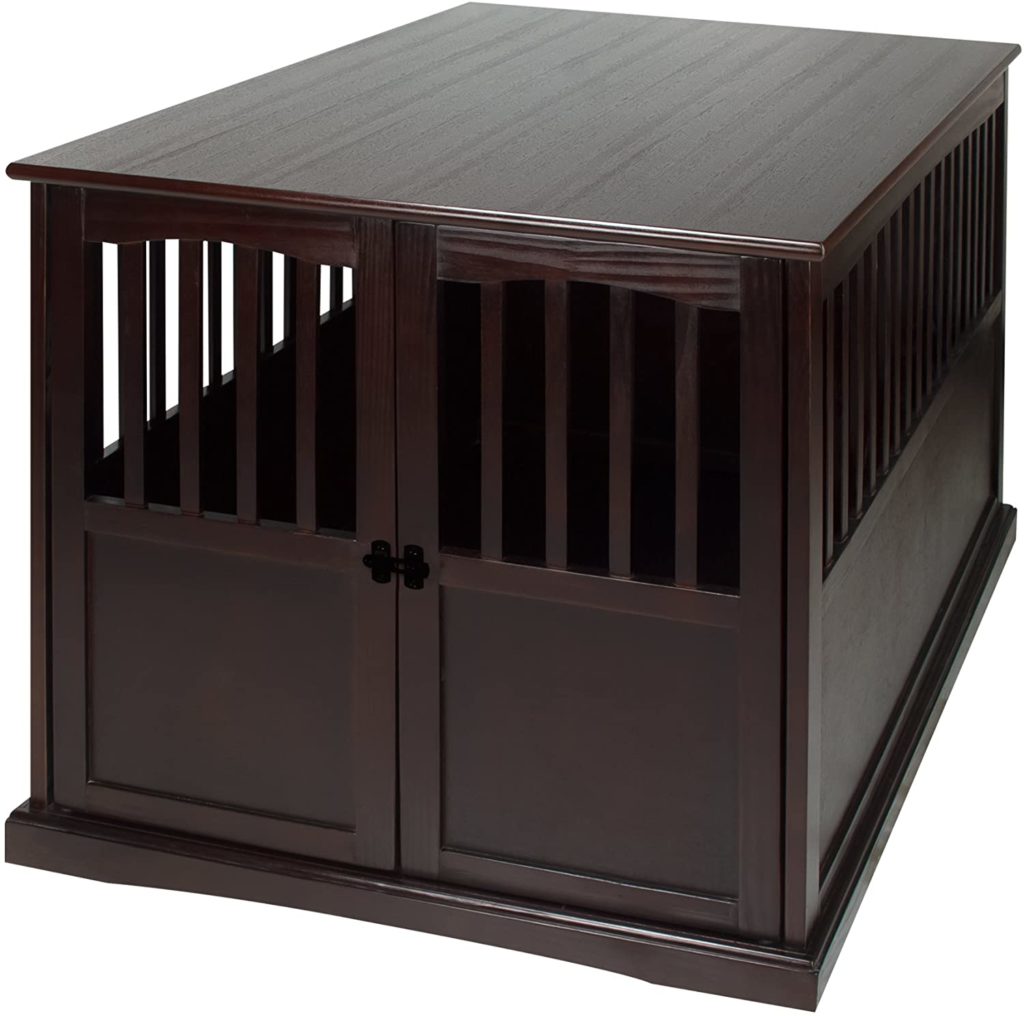
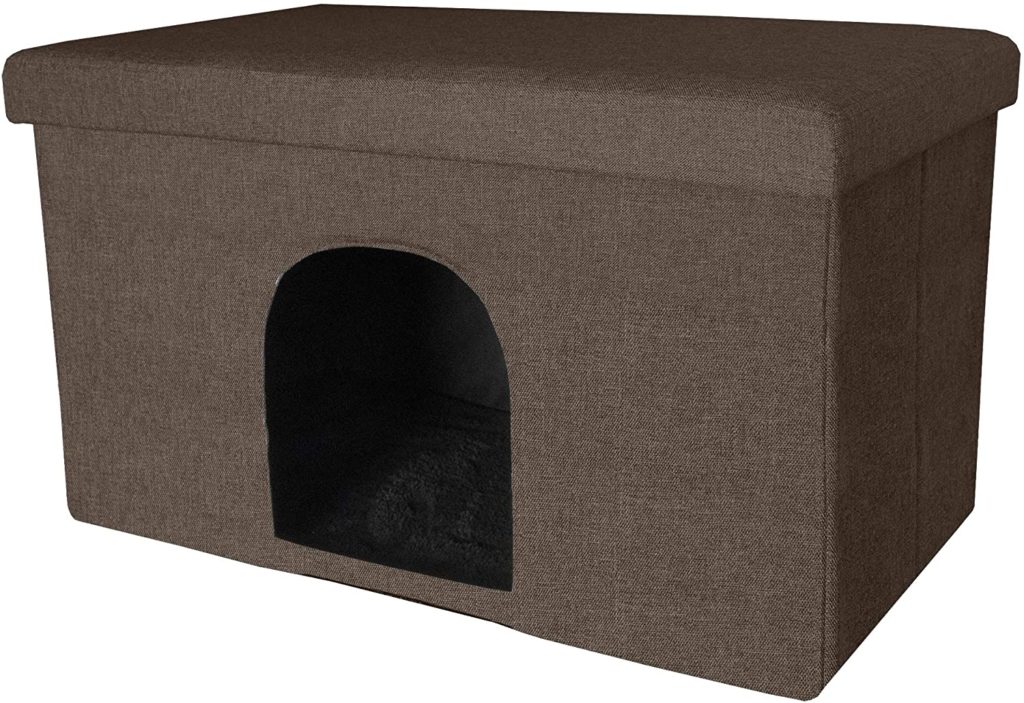
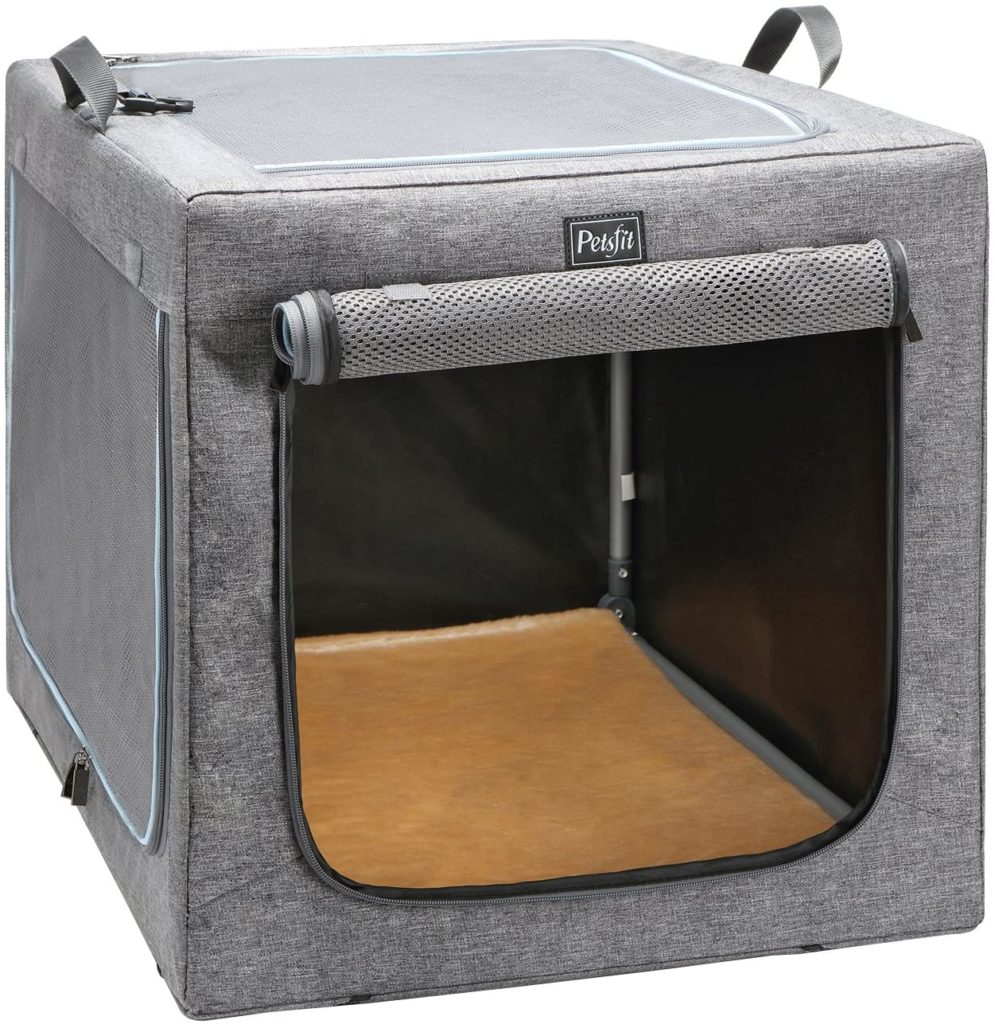
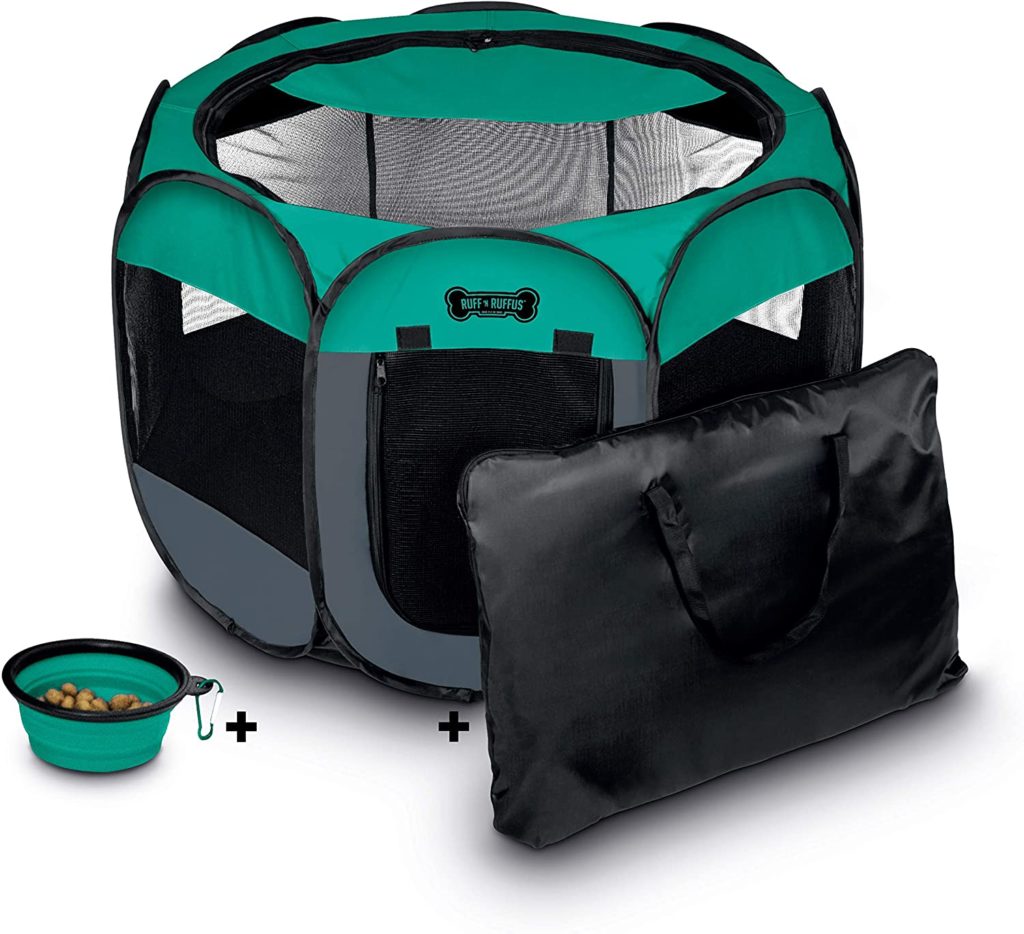
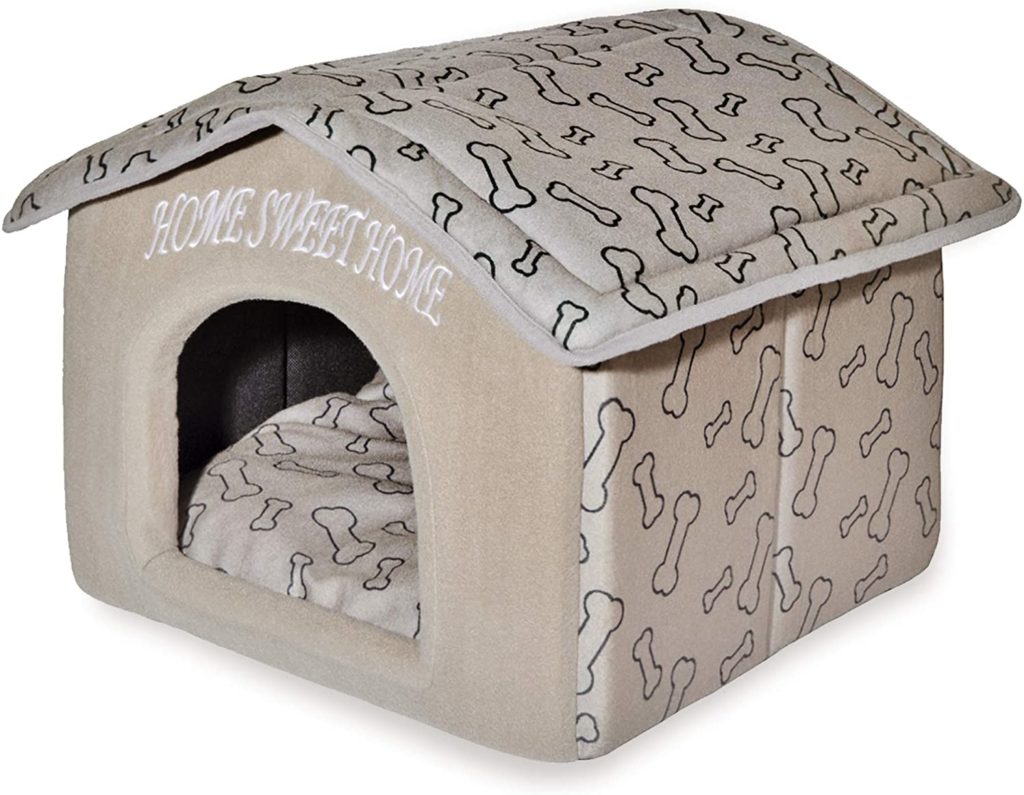
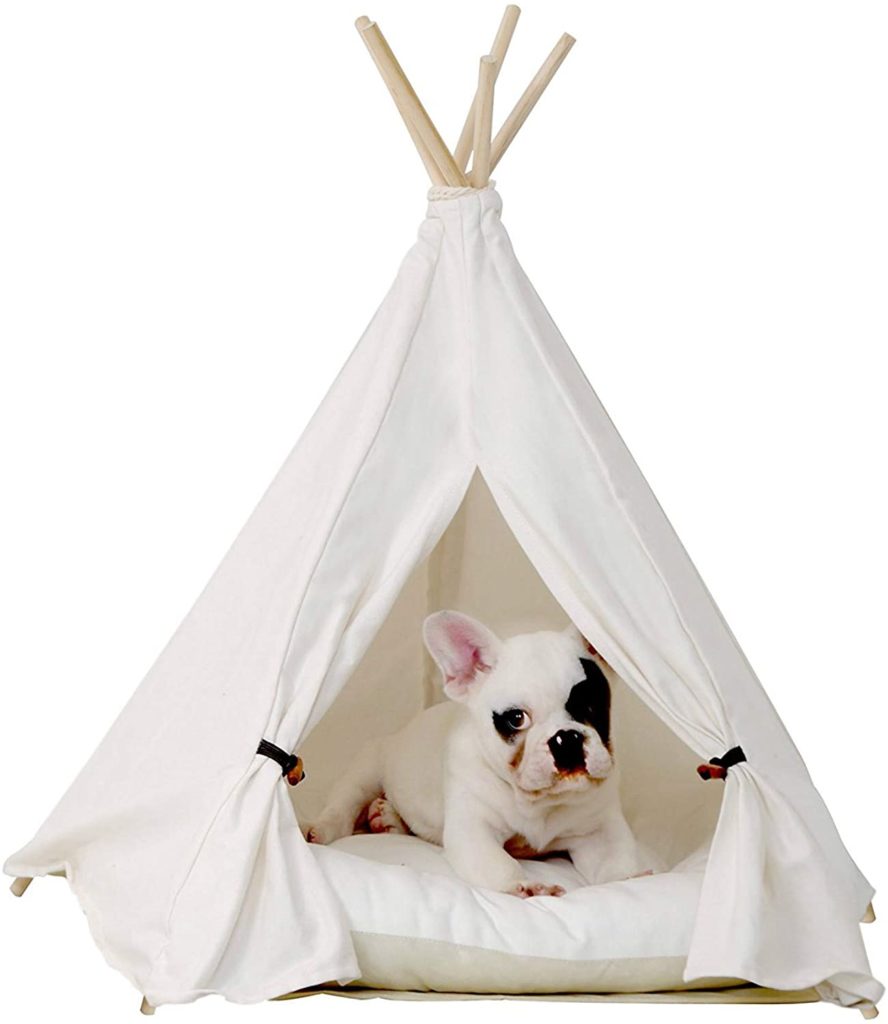
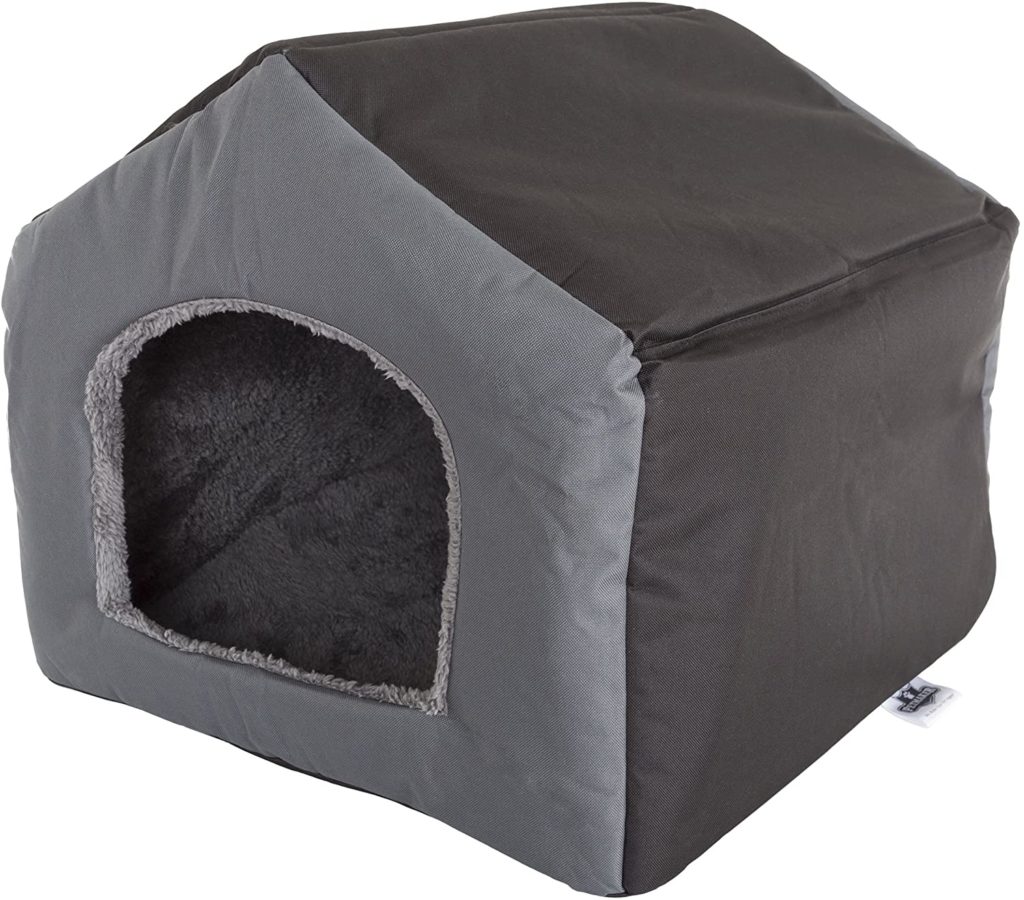
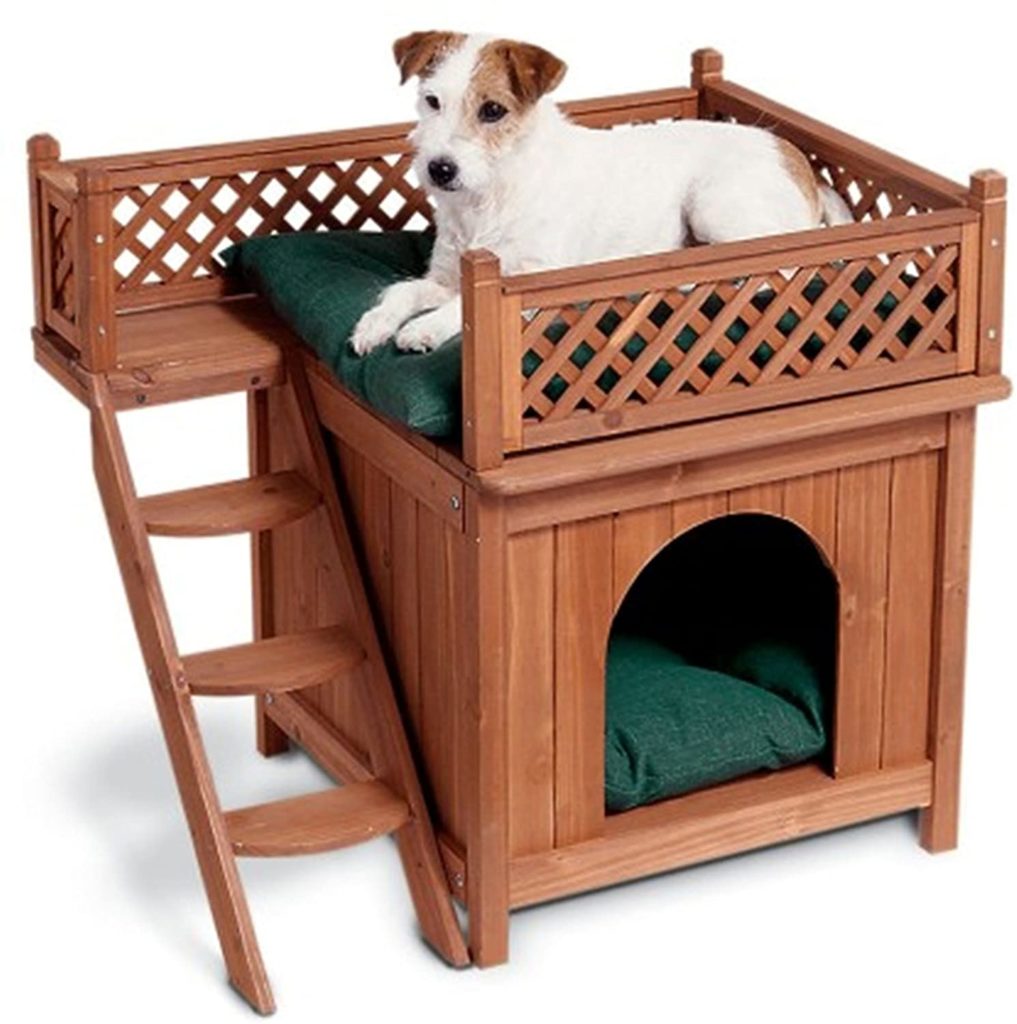
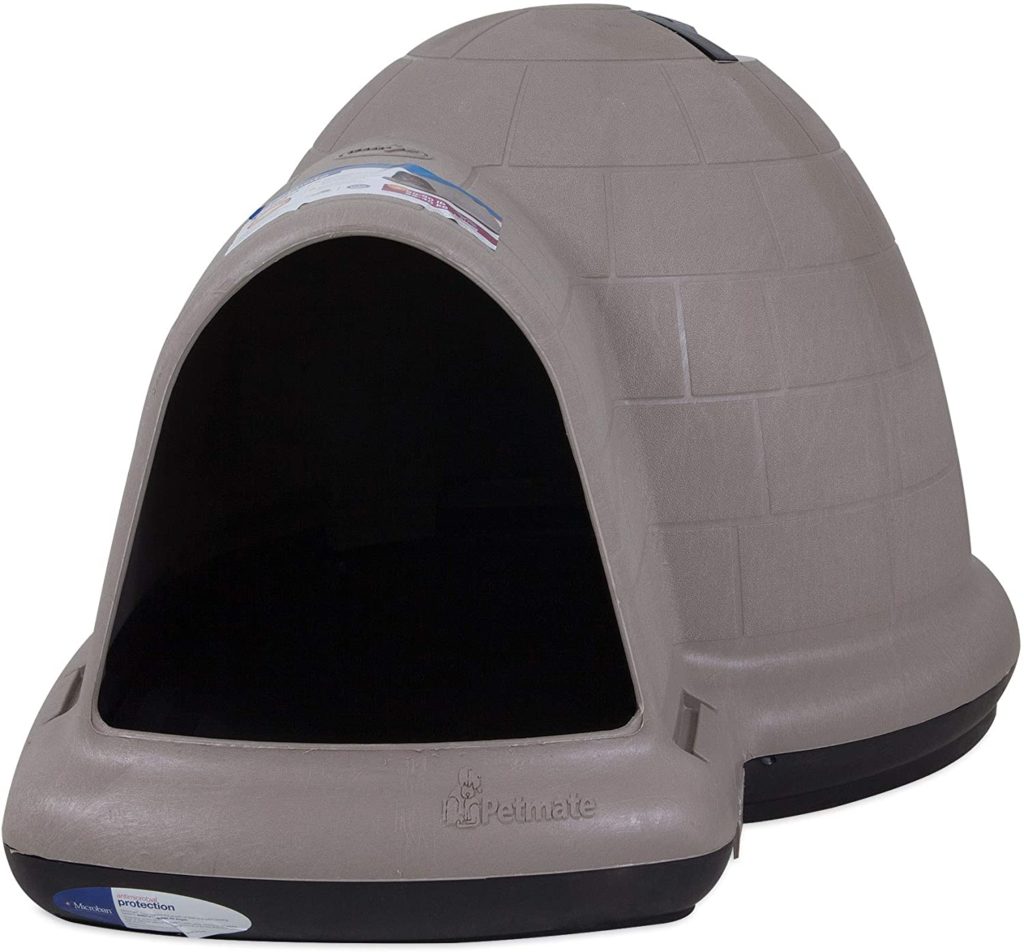



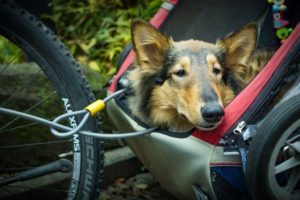
No comment yet, add your voice below!